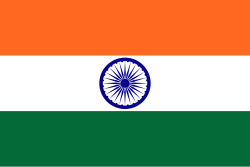| India at the 1998 Commonwealth Games | |
|---|---|
 | |
| CGF code | IND |
| CGA | Indian Olympic Association |
| Website | olympic |
| in Kuala Lumpur, Malaysia | |
| Flag bearers | Opening: Closing: |
| Medals Ranked 8th |
|
| Commonwealth Games appearances (overview) | |
This was the 12th time India participating in the Commonwealth Games. [1] India ranked 7th in the medal tally. [2]